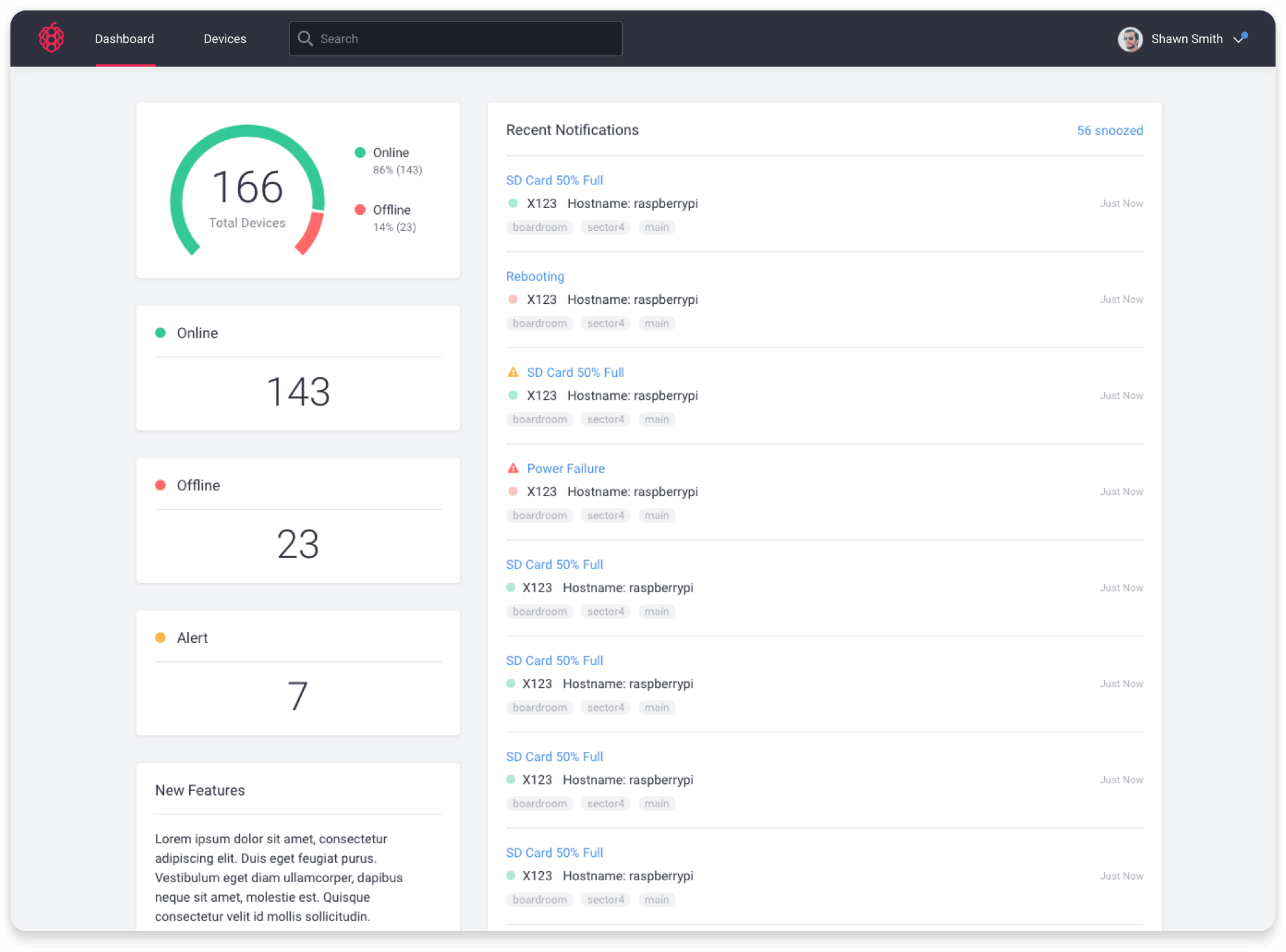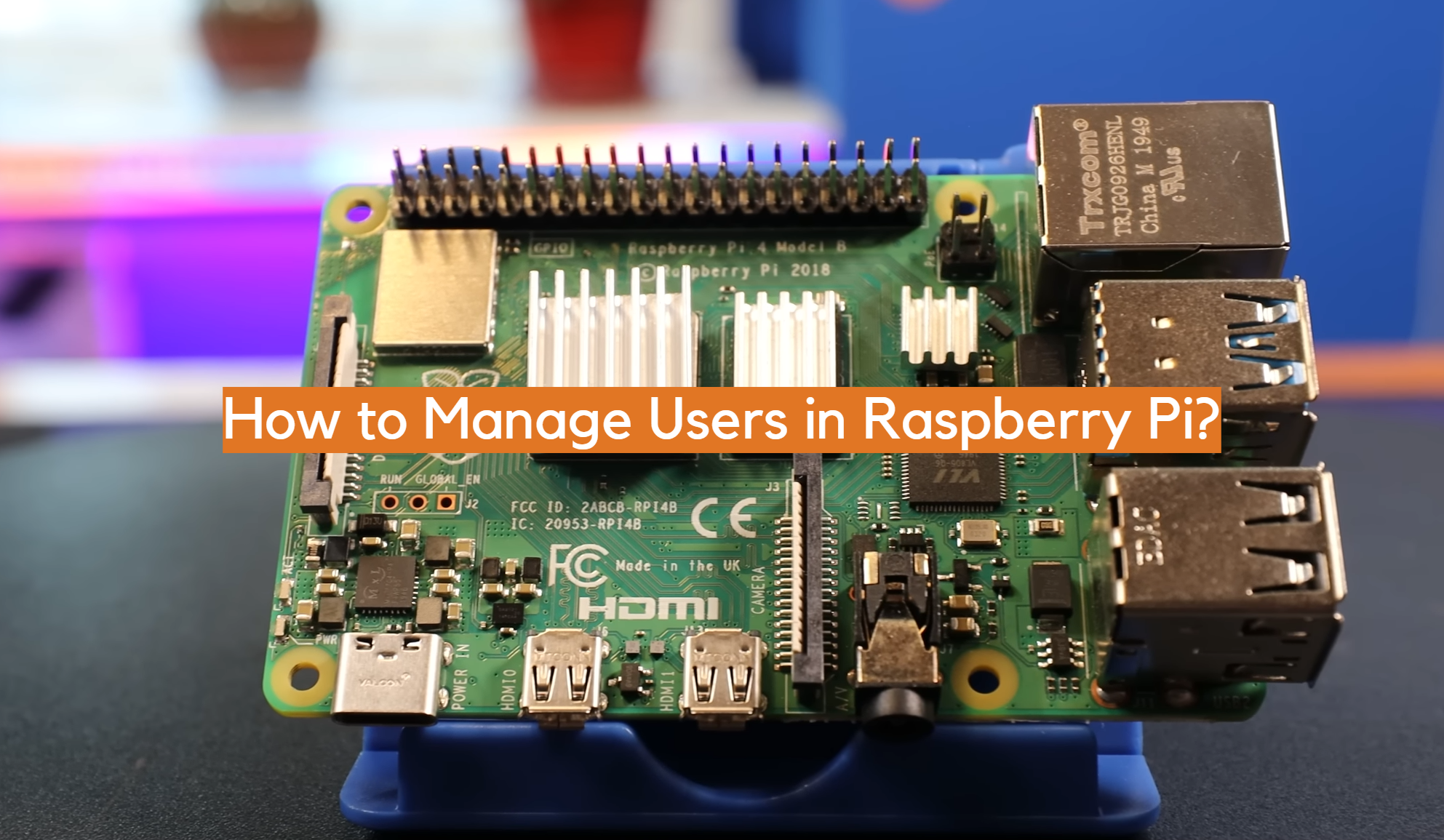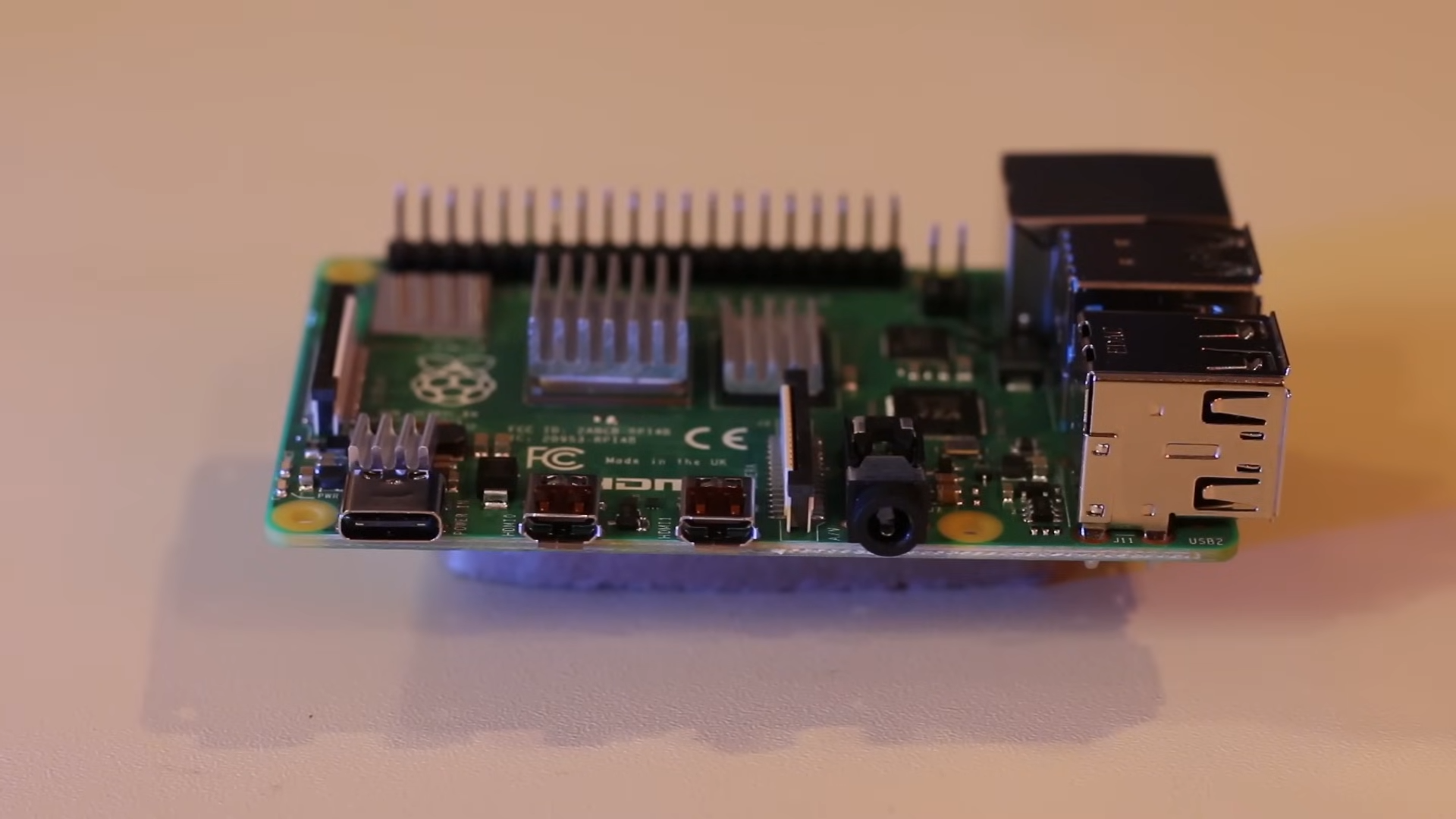Raspberry Pi Management: The Ultimate Guide To Mastering Your Tiny Powerhouse
Listen up, tech enthusiasts! If you're into DIY projects, home automation, or even setting up a personal server, then Raspberry Pi management is something you NEED to know about. This little device might look small, but it packs a punch that can revolutionize how you handle technology. Whether you're a beginner or a seasoned pro, understanding Raspberry Pi management is the key to unlocking its full potential.
Now, before we dive deep into the rabbit hole of Raspberry Pi management, let's take a moment to appreciate what this little gadget can do. It's not just a toy for hobbyists; it's a powerful tool that can be used for everything from building smart home systems to creating your own media center. And trust me, once you get the hang of managing your Raspberry Pi, you'll wonder how you ever lived without it.
But why focus on Raspberry Pi management? Well, because without proper management, your projects could end up as half-baked experiments that don't live up to their potential. This guide will walk you through everything you need to know to manage your Raspberry Pi like a pro, from setting it up to troubleshooting common issues. So, buckle up and get ready to level up your tech game!
- Movie Hd Hub Your Ultimate Destination For Highquality Entertainment
- Who Is Lawrence Wongs First Wife Unveiling The Untold Story
What Exactly is Raspberry Pi Management?
Alright, let's break it down. Raspberry Pi management refers to the process of setting up, configuring, and maintaining your Raspberry Pi device. It's not just about plugging it in and hoping for the best; it's about ensuring that your Pi runs smoothly, efficiently, and securely. Think of it as taking care of a pet—except this pet can automate your home or power your business.
Here's the deal: managing your Raspberry Pi involves a lot more than just installing software. You'll need to learn about things like file systems, network configurations, and even security protocols. But don't worry, we'll cover all of that and more in this guide. The goal is to make you feel confident enough to tackle any project that comes your way.
Why Should You Care About Raspberry Pi Management?
Let's face it—Raspberry Pi is more than just a cool gadget; it's a gateway to endless possibilities. Whether you're building a home automation system, creating a retro gaming console, or even setting up a weather station, proper management is crucial for success. Here's why:
- Is Mr Bean Dead In 2025 The Truth Behind The Rumors
- Unleash Your Summer Vibes Exploring Games Like Summertime Saga
- Efficiency: Proper management ensures that your Raspberry Pi runs smoothly without any hiccups.
- Security: With cyber threats on the rise, securing your Pi is more important than ever.
- Longevity: Good management practices can extend the lifespan of your device, saving you money in the long run.
- Flexibility: Knowing how to manage your Pi opens up a world of possibilities for customization and innovation.
So, whether you're a hobbyist looking to automate your home or a business owner exploring IoT solutions, mastering Raspberry Pi management is a must-have skill.
Setting Up Your Raspberry Pi: The Basics
Before you can start managing your Raspberry Pi, you need to set it up properly. This involves a few key steps, from choosing the right hardware to installing the operating system. Don't worry; it's easier than it sounds. Here's a quick rundown:
Hardware Requirements
First things first, you'll need the right gear. Here's what you'll need to get started:
- Raspberry Pi board (any model will do, but newer models have more features).
- A microSD card (at least 16GB, preferably 32GB or higher).
- A power adapter compatible with your Raspberry Pi model.
- HDMI cable and monitor (optional, depending on your setup).
- Keyboard and mouse (again, optional if you're using remote access).
Once you've got all the hardware, it's time to move on to the next step.
Installing the Operating System
Now, here's where things get interesting. You'll need to install an operating system on your Raspberry Pi. The most popular choice is Raspberry Pi OS, but there are plenty of other options depending on your project. Here's how you do it:
- Download the Raspberry Pi Imager from the official website.
- Insert your microSD card into your computer.
- Launch the Imager and select the operating system you want to install.
- Choose your microSD card as the target device and hit "Write."
And that's it! Your microSD card is now ready to boot your Raspberry Pi.
Understanding Raspberry Pi File Systems
Now that your Raspberry Pi is set up, let's talk about file systems. Understanding how your Pi stores and manages data is crucial for effective management. Think of it like organizing your digital workspace—keeping things tidy makes everything run smoother.
Types of File Systems
Raspberry Pi typically uses the ext4 file system, but there are other options depending on your needs. Here's a quick overview:
- ext4: The default file system for Raspberry Pi OS, known for its reliability and performance.
- FAT32: Often used for boot partitions due to its compatibility with Windows systems.
- NTFS: Rarely used on Raspberry Pi but can be useful for certain applications.
Knowing which file system to use can make a big difference in how your Pi performs, especially if you're working on resource-intensive projects.
Configuring Your Raspberry Pi
Alright, let's get into the nitty-gritty of configuring your Raspberry Pi. This is where you start tailoring your device to suit your specific needs. Whether you're setting up a headless server or configuring Wi-Fi, there's a lot you can do to optimize your Pi.
Headless Setup
If you don't have a monitor handy, you can set up your Raspberry Pi headlessly. Here's how:
- Create an empty file named "ssh" on the boot partition of your microSD card to enable SSH.
- Create another file named "wpa_supplicant.conf" to configure Wi-Fi settings.
- Insert the microSD card into your Pi and power it on.
Once your Pi is up and running, you can connect to it using SSH from another computer.
Wi-Fi Configuration
Setting up Wi-Fi on your Raspberry Pi is a breeze. You can do it either through the graphical interface or by editing configuration files. Here's the latter method:
- Open the "wpa_supplicant.conf" file using a text editor.
- Enter your Wi-Fi network details, including SSID and password.
- Save the file and reboot your Pi.
And just like that, your Pi will connect to your Wi-Fi network automatically.
Managing Raspberry Pi Software
Software management is a big part of Raspberry Pi management. Keeping your software up to date ensures that your Pi runs smoothly and securely. Here's how you can manage your software effectively:
Updating Software
Regular updates are essential for maintaining a healthy Raspberry Pi. Here's how you do it:
- Open the terminal on your Raspberry Pi.
- Type "sudo apt update" to refresh the package list.
- Type "sudo apt upgrade" to install the latest updates.
That's it! Your Pi will now have the latest software updates installed.
Installing New Software
Need to install new software? No problem. Here's how:
- Open the terminal and type "sudo apt install [package-name]."
- Follow the prompts to complete the installation.
Simple, right? With these commands, you can install pretty much any software you need for your projects.
Raspberry Pi Security Best Practices
Security is a top priority when it comes to Raspberry Pi management. After all, your Pi might be handling sensitive data or controlling important systems. Here are some best practices to keep your Pi secure:
Changing Default Credentials
One of the first things you should do is change the default username and password. Here's how:
- Log in to your Raspberry Pi using the default credentials ("pi" and "raspberry").
- Type "sudo passwd pi" to change the password.
- Consider changing the username to something unique.
By doing this, you make it much harder for unauthorized users to access your Pi.
Enabling SSH Securely
SSH is a powerful tool for remote access, but it can also be a security risk if not configured properly. Here's how to enable SSH securely:
- Install and configure a firewall to limit SSH access.
- Use strong passwords or SSH keys for authentication.
- Consider disabling password-based authentication altogether.
With these steps, you can enjoy the convenience of SSH without compromising security.
Troubleshooting Common Raspberry Pi Issues
Even the best-laid plans can go awry, and that's where troubleshooting comes in. Here are some common Raspberry Pi issues and how to fix them:
Overheating
Overheating is a common issue, especially with resource-intensive projects. Here's how to address it:
- Install a heatsink or fan to keep your Pi cool.
- Monitor temperatures using tools like "vcgencmd measure_temp."
- Optimize your software to reduce CPU usage.
By keeping your Pi cool, you'll avoid performance issues and extend its lifespan.
File System Corruption
File system corruption can be a nightmare, but it's preventable. Here's how:
- Always shut down your Pi properly before disconnecting power.
- Use a UPS (Uninterruptible Power Supply) to protect against power outages.
- Regularly back up your data to prevent loss.
With these precautions, you'll minimize the risk of file system corruption.
Conclusion: Take Your Raspberry Pi Management to the Next Level
And there you have it, folks! A comprehensive guide to mastering Raspberry Pi management. From setting up your device to troubleshooting common issues, you now have the knowledge and tools to take your projects to the next level. Remember, the key to successful Raspberry Pi management is staying organized, keeping things secure, and continuously learning.
So, what are you waiting for? Grab your Raspberry Pi, dive into some cool projects, and show the world what you can do. And don't forget to share your experiences and creations with the community. After all, the best part of tech is sharing the knowledge and inspiring others!
Call to Action: Got any tips or tricks for managing your Raspberry Pi? Share them in the comments below, and let's keep the conversation going!
Table of Contents
- What Exactly is Raspberry Pi Management?
- Why Should You Care About Raspberry Pi Management?
- Setting Up Your Raspberry Pi: The Basics
- Understanding Raspberry Pi File Systems
- Configuring Your Raspberry Pi
- Managing Raspberry Pi Software
- Raspberry Pi Security Best Practices
- Troubleshooting Common Raspberry Pi Issues
- Conclusion: Take Your Raspberry Pi Management to the Next Level



Detail Author:
- Name : Madeline Toy
- Username : eino72
- Email : fheaney@johnson.com
- Birthdate : 2003-12-26
- Address : 186 Malika Overpass Apt. 906 West Janiya, KS 32253
- Phone : (952) 473-1522
- Company : Johnston Group
- Job : Social Science Research Assistant
- Bio : Illum eligendi dolorem magnam accusamus architecto quod vel. Non est voluptas neque praesentium. Velit quasi qui perferendis. Ipsam perspiciatis eius dolorem qui.
Socials
linkedin:
- url : https://linkedin.com/in/kobe_klocko
- username : kobe_klocko
- bio : Molestiae aliquid non et fugiat aut sed dolorem.
- followers : 6696
- following : 395
tiktok:
- url : https://tiktok.com/@kklocko
- username : kklocko
- bio : Quod sed perspiciatis ad non suscipit. Rerum odit quam nemo.
- followers : 5876
- following : 2100
facebook:
- url : https://facebook.com/kobe_klocko
- username : kobe_klocko
- bio : Temporibus iste voluptatum sequi ullam excepturi et.
- followers : 5949
- following : 2333